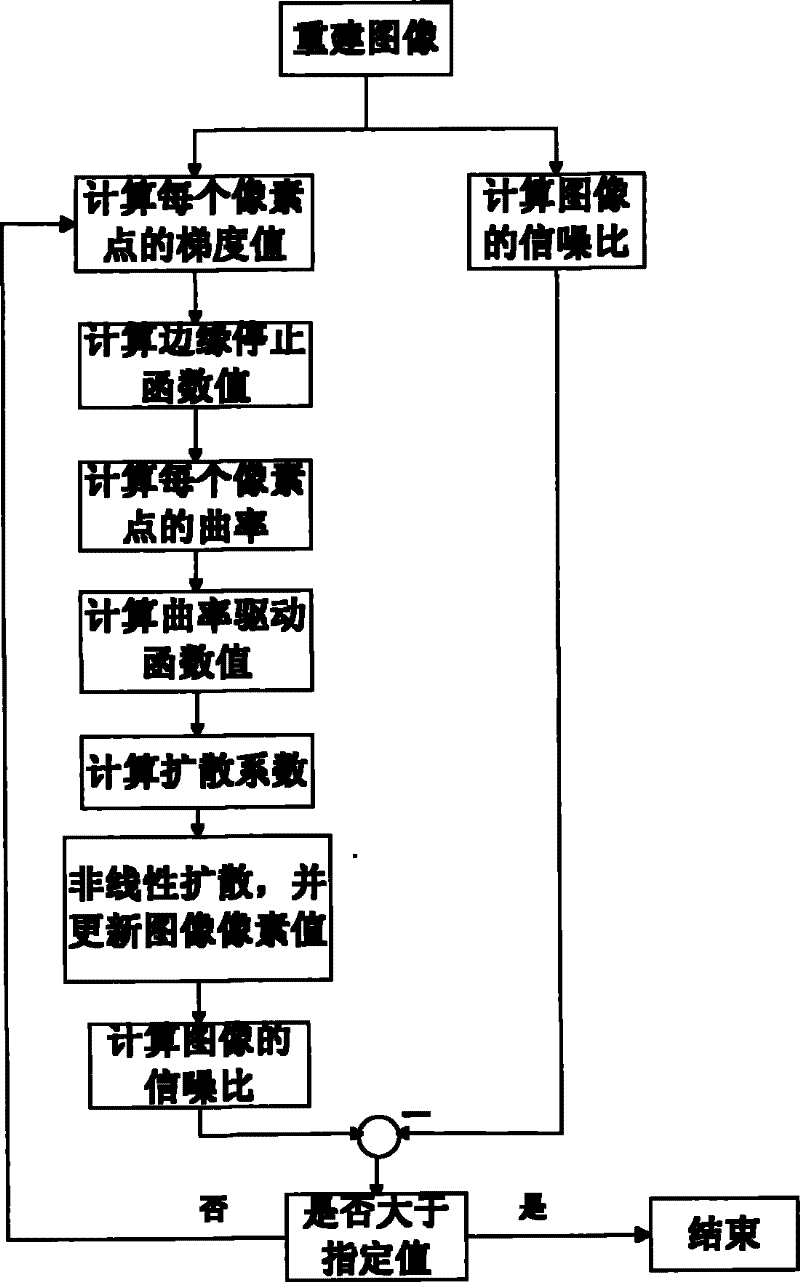Method for removing block effect of video image
A video image and block effect technology, which is applied in the field of image processing and computer vision, can solve problems such as block edge processing limitations, achieve the effect of weakening block effect and improving the quality of subjective evaluation
- Summary
- Abstract
- Description
- Claims
- Application Information
AI Technical Summary
Problems solved by technology
Method used
Image
Examples
Embodiment 1
[0016] Embodiment one: see figure 1 As shown, it is a realization block diagram of removing the block effect of a video image provided by this embodiment. After the steps of entropy decoding, reordering, inverse quantization, inverse transformation and filtering processing are performed on the video image, the reconstructed image is obtained, and then the image is reconstructed. Nonlinear Diffusion Filter Processing.
[0017] see figure 2 As shown, it is a block diagram of steps for performing non-linear diffusion filtering processing in the removal of video image block effects in H264 decoding provided by this embodiment, including the following steps:
[0018] The first step is to calculate the absolute value of the gradient of each pixel, and calculate the value of the edge stop function according to the absolute value of the gradient:
[0019] Suppose the image data in the display buffer is u i,j , then the absolute value of the gradient is:
[0020] | ...
PUM
 Login to View More
Login to View More Abstract
Description
Claims
Application Information
 Login to View More
Login to View More - R&D
- Intellectual Property
- Life Sciences
- Materials
- Tech Scout
- Unparalleled Data Quality
- Higher Quality Content
- 60% Fewer Hallucinations
Browse by: Latest US Patents, China's latest patents, Technical Efficacy Thesaurus, Application Domain, Technology Topic, Popular Technical Reports.
© 2025 PatSnap. All rights reserved.Legal|Privacy policy|Modern Slavery Act Transparency Statement|Sitemap|About US| Contact US: help@patsnap.com



